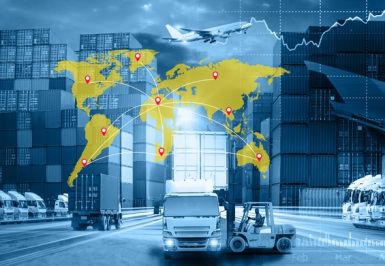
79% of global companies in the food and drink sector said that a lack of insurance solutions is among their greatest challenges in addressing supply chain risks over the last three to five years. That’s according to a new report by WTW.
For example, less than a third (30%) of food and beverage companies feel confident they have sufficient insurance to cover the impact of extreme weather on their supply chain.
Businesses also face considerable obstacles getting hold of all the data they need to achieve full visibility of their supply chain risks. More than three-quarters (78%) said they lacked the data and knowledge to understand their risks. A similar number (76%) said supplier concerns about proprietary knowledge and intellectual property was an impediment to transparency.
While food, beverage and agricultural supply chains appeared to have held up well in the face of recent challenges, most notably the pandemic and Ukraine war, the industry has been deeply impacted by production shutdowns, commodity shortages, energy prices hikes and inflation.
Almost three quarters (73%) of respondents in WTW’s 2023 Food, Beverage and Agricultural Supply Chain Risk Report said their losses specifically related to supply chain risk were higher or much higher than expected over the last two years –compared to 65% across all sectors.
Experiences and learnings from this period have motivated businesses to increase resilience against future shocks. A large majority surveyed (68%) said they have made some improvements in their approach to supply chain management in response to the pandemic. A further 20% said they have completely transformed their approach.
Sue Newton, Director, GB Food & Drink Practice Leader at WTW says: “The food and drink sector has always been exposed to supply chain disruption, but it’s likely the industry will face increasingly difficult challenges in the future from ongoing logistics and raw material shortages to the long-term impacts of climate change on agriculture and increasing competition for land and natural resources.
“Using tools that map the supply chain can help businesses start to understand where the information gaps are and begin to fill them. A third of businesses in the sector said using supply chain mapping software was among the measures that would have a beneficial impact in managing risks.”

